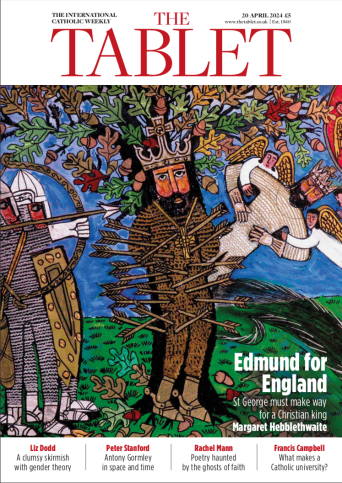Historian Simon Sebag Montefiore started Blood and Gold: The Making of Spain (8 December) at breakneck speed and never quite caught his breath.
This first episode of three explored Spanish history from classical times, when Cádiz was a colony of the Carthaginian empire, through to the heyday of the Muslim caliphate 1,300 years later. The first five minutes, when he told us what he was going to tell us, were bewildering. After that he settled down, but this was still a dense programme, covering a huge chronological and geographical range.
Always on the move, and always wearing the same hat and shirt, Montefiore told the story through ruins and buildings, some quite dazzling. He briefly consulted an expert on battles (Hannibal’s elephants were a liability), and one on harems (caliphs, like gentlemen, preferred blondes), but mostly this was a one-man show.
Montefiore’s presence in Spain was slightly mysterious: his serious history has mostly been about Russia. Tackling Spain, equally enigmatic, he tended to the anecdotal. The story was liberally – and literally – sexed up. The Visigoth regime broke up because of “a beautiful naked girl”, whom the king raped; the Moorish conqueror of Spain arrived with “his favourite beautiful slave girl” alongside him; Abdul al-Rahman, founder of the Muslim dynasty that ruled Spain for nearly 300 years, was once forced to hide under the skirts of “an attractive female cousin”; and so on.
Along with the sex came a lot of violence: a rejected harem girl – probably attractive – who had her face burnt off; numerous dismemberments, stranglings, beheadings and lion-induced martyrdoms.
The problem with this material is that, unless a source is mentioned, it is not so much history as fairy story. Montefiore, skipping merrily from tale to tale, had no time to tell us where they came from. That undermined not only his ripping yarns but also the ideas binding them together.
Perhaps we should not complain. This was popular history, made with the Open University, which invited us to think again about a country we think we know. And Montefiore was engaging company, until he said something silly. Was Ali Ibn Nafi, a ninth-century Muslim court musician, really “a famous singer-songwriter who became an international trendsetter”?
Nor did it help that his progress was accompanied by pounding, bombastic orchestral music, sometimes including a cod-flamenco drumbeat. None of this relentless racket had much to do with Spain. It was a relief when we got a minute or two of unaccompanied guitar music, with a professor of the instrument putting forward the idea that the distinctive up-and-down right thumb technique of the flamenco player originated in the oud-playing of that famous singer-songwriter. This was not a particularly convincing idea, but at least we knew where it came from.
10 December 2015, The Tablet
Grim tales
Edmund for England
 Loading ...
Loading ...
Get Instant Access
Subscribe to The Tablet for just £7.99
Subscribe today to take advantage of our introductory offers and enjoy 30 days' access for just £7.99



What do you think?
You can post as a subscriber user...
User Comments (0)